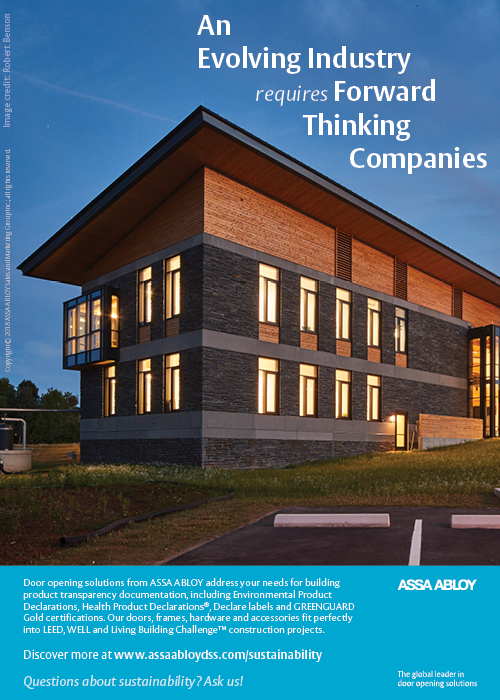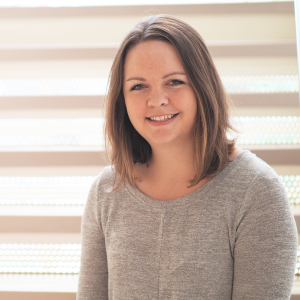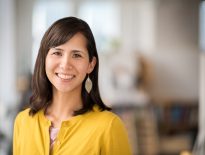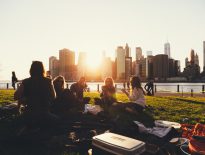In reflecting on Living Future 2018, I have been thinking about the authenticity of the work we do as creators of the built environment. What makes our work truly authentic and, in telling stories from the ground in Portland, what is truly authentic to Portland?
Portland is reputed as a city of progressives, makers, and activists; a model livable city at the forefront of sustainable urban planning, even ‘exporting’ our planning know-how to other cities. Our streets are designed around the pedestrian rather than the car, with short blocks and narrow streets. Entire lanes once used by cars have been converted to oversized bicycle lanes. We were building light rails instead of roads before most cities. More than 12% of our land area consists of parks and other natural areas, including Forest Park, a 5,200-acre forest located within city limits.
Despite all of this, we still have a lot of work to do. There are areas in which our values don’t align with our actions, or at least our current progress, as we reach to live those values. However, there are passionate, committed people and organizations in Portland and across the state taking action to address these issues. These are the stories I would like to share.
Falling Behind and Catching Up on Energy
We all know the statistics: more than one-third of U.S. energy consumption and nearly half of U.S. CO2 emissions come from buildings, and buildings are one of the greatest contributing factors to climate change and one of the most cost-effective strategies to reducing our footprint.
In pursuit of a carbon-neutral future, the State of Oregon has committed to the Paris Agreement and set emissions reduction goals, yet outdated building energy codes have not improved in parallel to meet these goals. In Oregon, state building codes set the standard for every city in the state. No city’s energy code can be more stringent than the state standard. What this means is that not only Portland but also all of Oregon are two codes cycles behind the model standard energy code.
 The good news is that last fall, Governor Kate Brown, signed Executive Order 17-20, “Accelerating Efficiency in Oregon’s Built Environment to Reduce Greenhouse Gas Emissions and Address Climate Change”,effectively ending the stall in updating our energy codes. The executive order mandates deadlines in which all new state buildings must operate as carbon neutral, all newly constructed buildings must be solar ready, and newly constructed residential buildings must meet the U.S. Department of Energy’s Zero Energy Ready Standard. Additionally, the order calls for expansion of meter-based savings pilot programs and development of a ten-year plan to prioritize energy efficiency in affordable housing to reduce utility bills.
The good news is that last fall, Governor Kate Brown, signed Executive Order 17-20, “Accelerating Efficiency in Oregon’s Built Environment to Reduce Greenhouse Gas Emissions and Address Climate Change”,effectively ending the stall in updating our energy codes. The executive order mandates deadlines in which all new state buildings must operate as carbon neutral, all newly constructed buildings must be solar ready, and newly constructed residential buildings must meet the U.S. Department of Energy’s Zero Energy Ready Standard. Additionally, the order calls for expansion of meter-based savings pilot programs and development of a ten-year plan to prioritize energy efficiency in affordable housing to reduce utility bills.
Critical to the implementation of the executive order was the recently formed Zero Energy Ready Oregon (ZERO) Coalition that provided technical and policy consultation to the Governor’s office. Initially formed as a coalition of non-profits, the central mission of ZERO is to accelerate the uptake of zero energy and zero energy-ready buildings in Oregon as a significant factor in reaching the climate action goals of the state. Since its inception, the ZERO coalition has added several new members, expanding the group to a wider array of stakeholders outside of the non-profit sector. Over the course of implementing the executive order directives, the coalition will continue to provide research and technical support to the Built Environment Efficiency Working Group.
In addition, the City of Portland is in the process of developing a Path to Zero Roadmap, the local Portland Collaborative has formed a group of professionals seeking to implement a pilot program to incentivize Living Buildings, and community-based projects like the June Key Delta House and Emerson Street House have merged mission with action as they reach new levels of energy efficiency in Portland.
Understanding and Addressing Displacement
Portland is a hipster haven, full of beards, cyclists and unicyclists, local breweries, and eccentric shops; it is environmentally sensitive and socially progressive. Did you also know that it is the whitest big city in America and has an entrenched history of racism? It’s not well-known, even among the City’s residents, most likely because 75% of the population has never faced racial discrimination, and as more and more minorities are displaced to the outer edges of the city, white people do not witness this bias as frequently.
Equity was a prominent theme throughout the keynotes, sessions, and discussions at the Living Future unConference this year. Whether discussing energy or policy or urban planning, our industry continues to fall short when addressing issues of equity in our work. Like most cities, Portland is grappling with how to supply enough affordable housing for its residents and how to encourage development without triggering gentrification and continued displacement of historically and still disenfranchised communities.
According to “The Racist History of Portland, the Whitest City in America”, in 1844, Oregon banned slavery, but also all African Americans from the state. The Equal Protection Clause was not ratified in Oregon until 1973, more than 100 years after the 14th Amendment was adopted. In 1948, the Vanport flood displaced residents living in temporary housing, forcing African Americans who chose to stay in Portland to the few neighborhoods they were allowed to live in. Redevelopment and ‘urban renewal’, redlining, and divestment by the City have forced residents out of the central city for decades. In recent years, more than 25% of the African American population has been forced to move to the city’s outskirts due to rising prices and gentrification, continuing the long history of displacement.
To combat the continued displacement, groups like Vanport Mosaic and Right 2 Root are working to raise awareness. Vanport Mosaic is a community-based non-profit. Founded in 2016, they hold an annual festival and other exhibits which use art, tours, and storytelling to share the uncomfortable stories of the past so that the community can learn from this history while honoring those who survived it.
 Right 2 Root is a community-led design approach created by Cat Goughnour, policy expert, human rights advocate, and was a speaker at LF18. Right 2 Root is focused on connecting community members affected by, or most at risk for, displacement with Portland’s planners and architects, bringing them to the table to tell their own stories and advocate for their own needs. This approach gives Portland’s African American community the opportunity to inform design and planning solutions, with the aim of regaining their sense of place and community and creating strategies which emphasize “Health + Wealth” for those who have been disproportionately disadvantaged by past policy-making.
Right 2 Root is a community-led design approach created by Cat Goughnour, policy expert, human rights advocate, and was a speaker at LF18. Right 2 Root is focused on connecting community members affected by, or most at risk for, displacement with Portland’s planners and architects, bringing them to the table to tell their own stories and advocate for their own needs. This approach gives Portland’s African American community the opportunity to inform design and planning solutions, with the aim of regaining their sense of place and community and creating strategies which emphasize “Health + Wealth” for those who have been disproportionately disadvantaged by past policy-making.
Right 2 Root recently released a report that details the work they have undertaken over the past several years. The report includes priority types of development, a master plan that identifies new community nodes, and proposals surrounding community, commercial, and residential spaces.
So where do Authenticity + Action collide in Portland? I think it’s in acknowledging the current gaps that keep us from demonstrating our core values and using this information to work toward solutions that address and correct those issues. It is bringing all voices and perspectives to the table to be heard. It is understanding our past while working toward the future we all envision. It is a combination of efforts by city and state officials, grassroots organizations, coalitions of concerned citizens, and the people who are historically most impacted by these decisions. These are some of the stories of the people doing that work, seeking a living future that is just for all.



